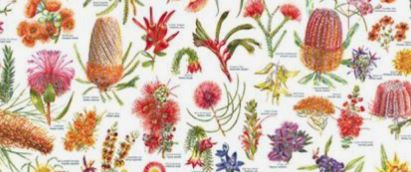Native plants play a vital role in maintaining the ecological balance of our planet. They are species that have evolved and adapted to specific regions over thousands of years, making them well-suited to local climates and soil conditions. In this blog post, we will explore the different types of native plants and their unique characteristics.
1. Wildflowers
Wildflowers are a popular type of native plant known for their vibrant colors and delicate beauty. They can be found in various habitats, including meadows, woodlands, and prairies. Wildflowers not only provide aesthetic value but also serve as important sources of nectar for pollinators like bees and butterflies.
2. Grasses and Sedges
Grasses and sedges are essential components of native plant communities. They are known for their ability to stabilize soil, prevent erosion, and provide habitat for wildlife. Grasses, such as switchgrass and big bluestem, are commonly found in prairies, while sedges thrive in wetland areas.
3. Shrubs
Shrubs are woody plants that are smaller than trees but larger than herbaceous plants. They are often found in forests, woodlands, and open areas. Native shrubs, such as blueberry bushes and spicebush, offer food and shelter for birds and other wildlife. They also provide important nesting sites.
4. Trees
Trees are the giants of the plant world and play a crucial role in maintaining healthy ecosystems. Native trees, such as oak, maple, and pine, provide shade, produce oxygen, and absorb carbon dioxide. They also offer habitat for a wide range of animals and contribute to the overall biodiversity of an area.
5. Vines
Vines are climbing or trailing plants that use other plants or structures for support. Native vines, like Virginia creeper and trumpet vine, can be found in forests and along stream banks. They provide cover for wildlife, attract pollinators, and add visual interest to landscapes.
6. Aquatic Plants
Aquatic plants are adapted to living in water and are crucial for maintaining the health of aquatic ecosystems. They help filter water, provide oxygen, and create habitat for fish and other aquatic organisms. Native aquatic plants, such as water lilies and cattails, are found in ponds, lakes, and wetlands.
7. Ferns and Mosses
Ferns and mosses are non-flowering plants that thrive in moist environments. They are often found in forests, wetlands, and shady areas. Native ferns and mosses add texture and beauty to landscapes while providing important habitat for insects and other small organisms.
By incorporating native plants into our gardens and landscapes, we can create sustainable and biodiverse environments. Native plants are not only beautiful but also support local ecosystems and help combat issues like habitat loss and declining pollinator populations. So, consider adding some native plants to your surroundings and be a part of the movement to protect and preserve our natural heritage.

Leave a comment